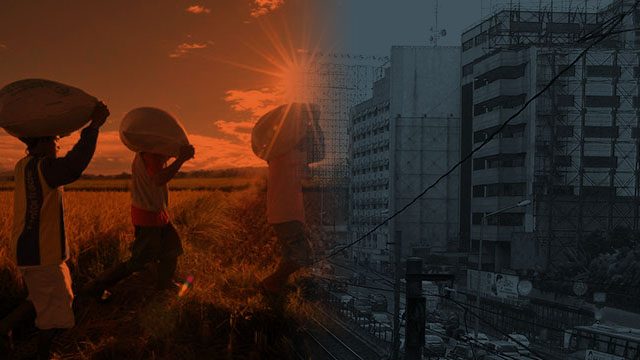SUMMARY
This is AI generated summarization, which may have errors. For context, always refer to the full article.

As the World Economic Forum on East Asia gathers in Manila, there is a renewed focus on encouraging responsible investment to promote both economic growth and stability
What would it take to unlock the growth and development potential of fragile states? Fragile states are confronted by a myriad of simultaneous challenges, including armed conflict or political violence, serious and persistent human rights violations, weak rule-of-law institutions, and threats from organized transnational crime and terrorist networks. They can also be at heightened risk from natural hazards, including those potentially resulting from climate change. They often face significant obstacles in terms of tapping into the potential of their workforce. According to the World Bank, 7 of the world’s fragile states are part of Asia.
And yet, despite the challenges they face, many fragile states post strong growth rates, such as East Timor at 8% or Nepal at 5% in 2014. Many possess vast natural resources wealth, such as the gas reserves of Myanmar or the reefs of the Marshall Islands. Many fragile states are part of the World Trade Organization or regional economic integration mechanisms. Most are open to foreign direct investment.
Today’s fragile states can be tomorrow’s emerging markets. Responsible investment in fragile states can lead to job creation and sustainable, equitable economic growth, if undertaken in line with established standards and practices. Attracting responsible investment can contribute to good public governance and increasing state effectiveness. In short, responsible investment can contribute to peace and prosperity.
Of course, investment in these states presents challenges that need to be addressed and managed. The levels of FDI into fragile states remain low. While BRICS received US$263 billion of investment flows in 2013, the group of 40 fragile states collectively received $214.6 billion of flows. Investors have to consider the risks – and at present, many decide that the risks outweigh the potential returns. So what can be done to encourage responsible risk taking?
First, more attention should be given to the importance of functioning and thriving economies in stabilizing fragile states. Too often, economic development is overshadowed by other critical areas, including security sector reform, building government capacity and addressing grievances. These are all undeniably important. Yet the lack of an economic plan can stall progress across all areas. Myanmar, for example, has prioritized important economic reforms during its critical transition period. These reforms, if carried out equitably, will in turn support inclusive growth and job creation and thus, stabilization in the aftermath of the civil war.
Second, the international development community needs to do more. A range of institutions, including multilateral finance institutions, development banks and investment banks can provide greater support for such investment and make this support easier to access. These efforts should include greater engagement in the early phases of stabilization and enhanced efforts to catalyze private capital and help mitigate risk. We should demand more. MIGA already has announced plans to increase its issuance of new guarantees by 50% in the coming 3 years.
Third, investors, both private and public, could communicate better on the benefits that they can make to advancing the needs of countries and communities where they plan to operate. Responsible investors are increasingly outlining how their investment meets society’s needs, as well as delivering on financial returns. Indeed, many investors acknowledge that their financial returns are better when they can simultaneously demonstrate how they are bringing value to a range of stakeholders.
Finally, there is too little trade between these fragile states and the rest of the world. Improving trade flows and access to markets on terms that are fair for fragile states can spur exports and boost job creation. The planned international airport in Mindanao or the extension of EU trade preferences to Myanmar and Nepal, are welcome measures to improve market access and spur economic development.
Today’s fragile states of Asia can be tomorrow’s Asian powerhouses. The possibilities are real and sizeable. Sustainable economic growth and development is vital for these countries – and will benefit the rest of the world as well. Our task now – working together with individuals and institutions around the globe – is to address the obstacles and together learn how to unlock these opportunities. – Rappler.com
This article was published in collaboration with the World Economic Forum. Terry Heymann is managing director of the World Gold Council and member of the Global Agenda Council on Fragile States and Conflict Prevention.
The Philippines is hosting the World Economic Forum on East Asia from May 21 to 23, 2014 at the Makati Shangri-La Hotel. For updates about the forum, visit Rappler’s microsite.
Add a comment
How does this make you feel?
There are no comments yet. Add your comment to start the conversation.